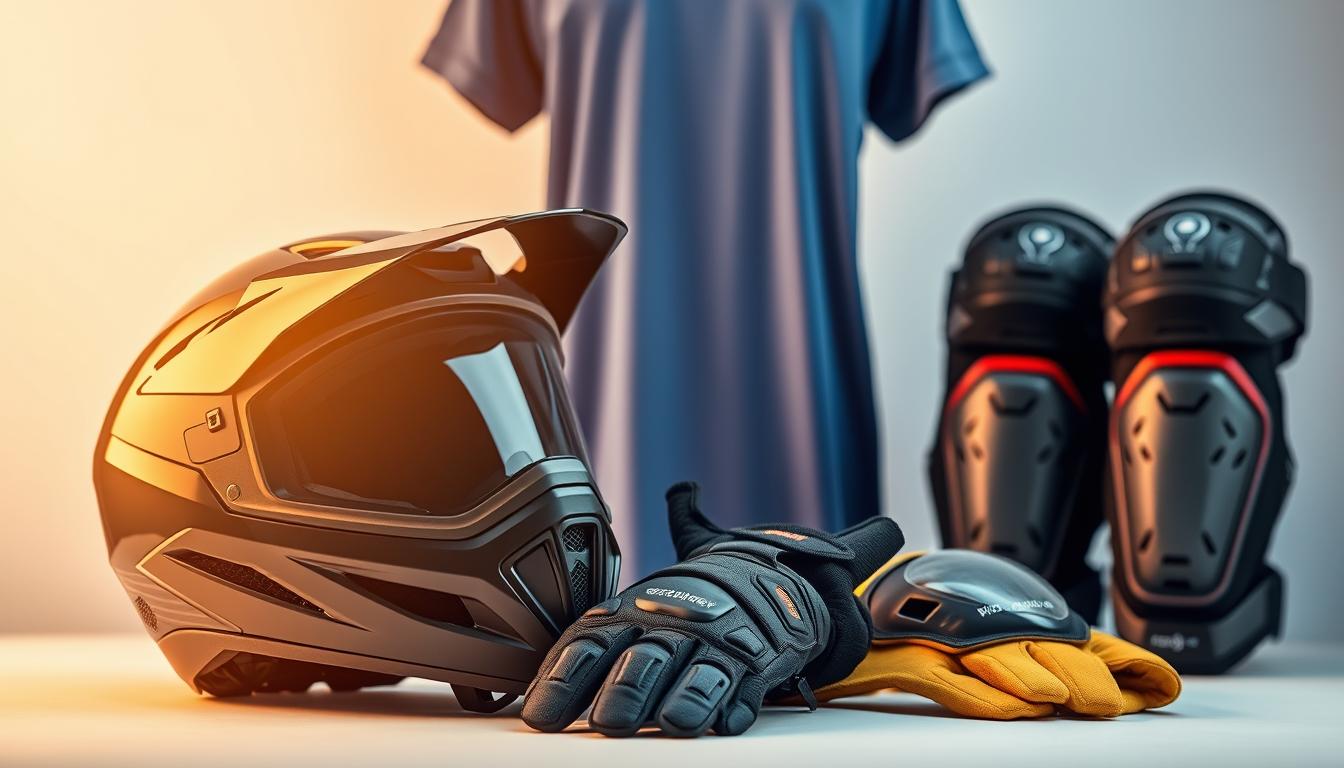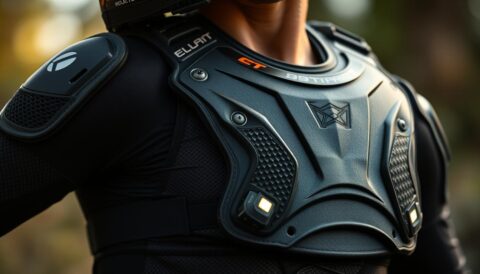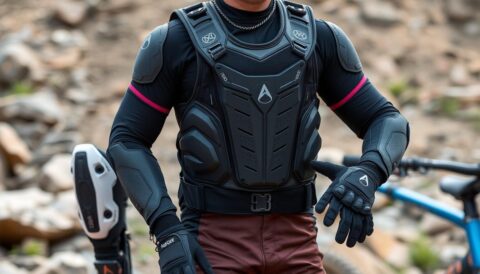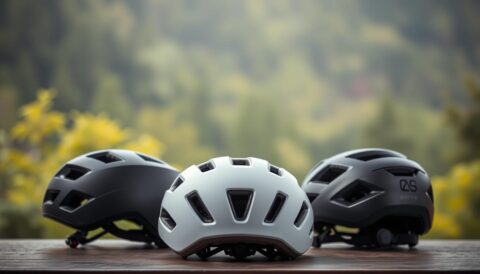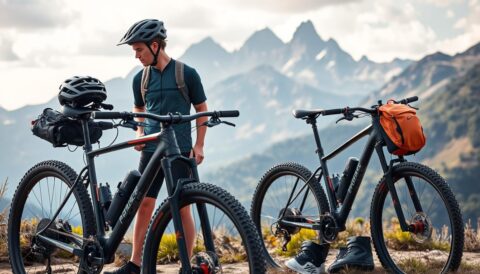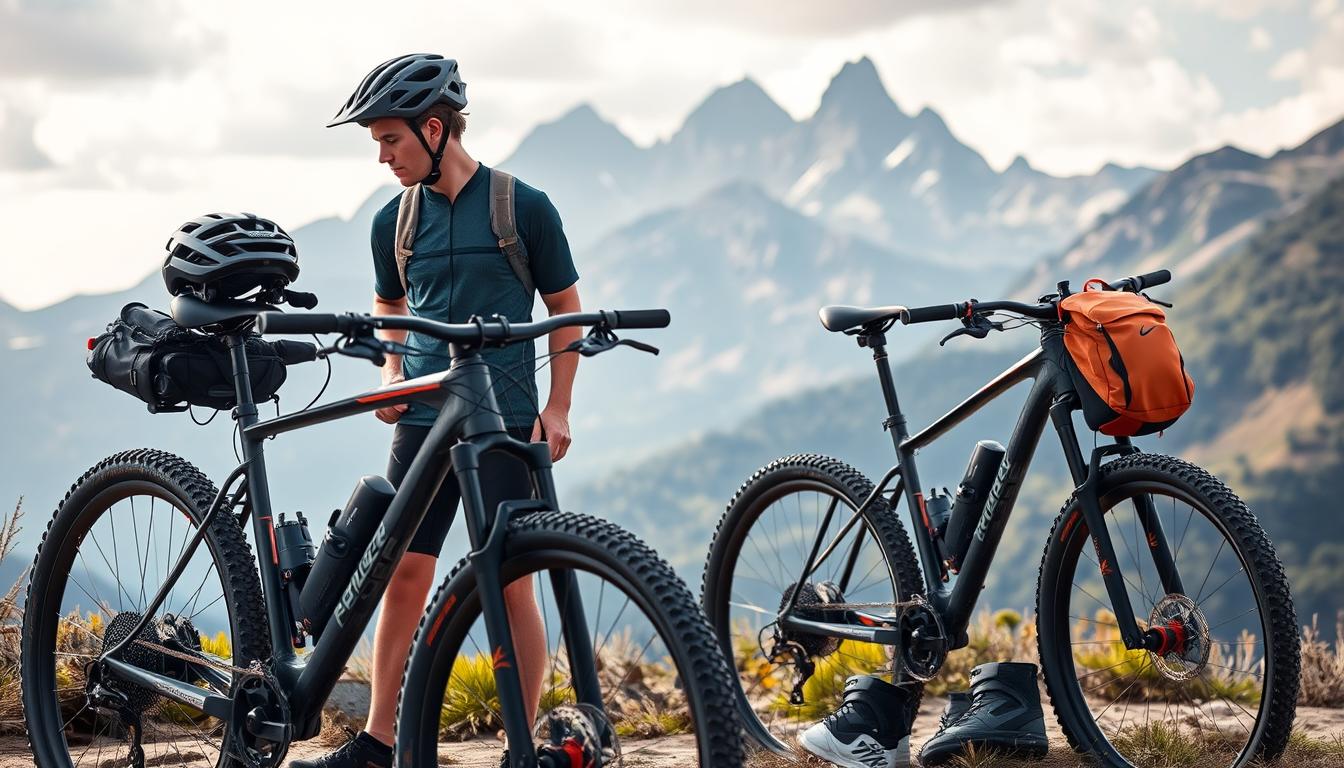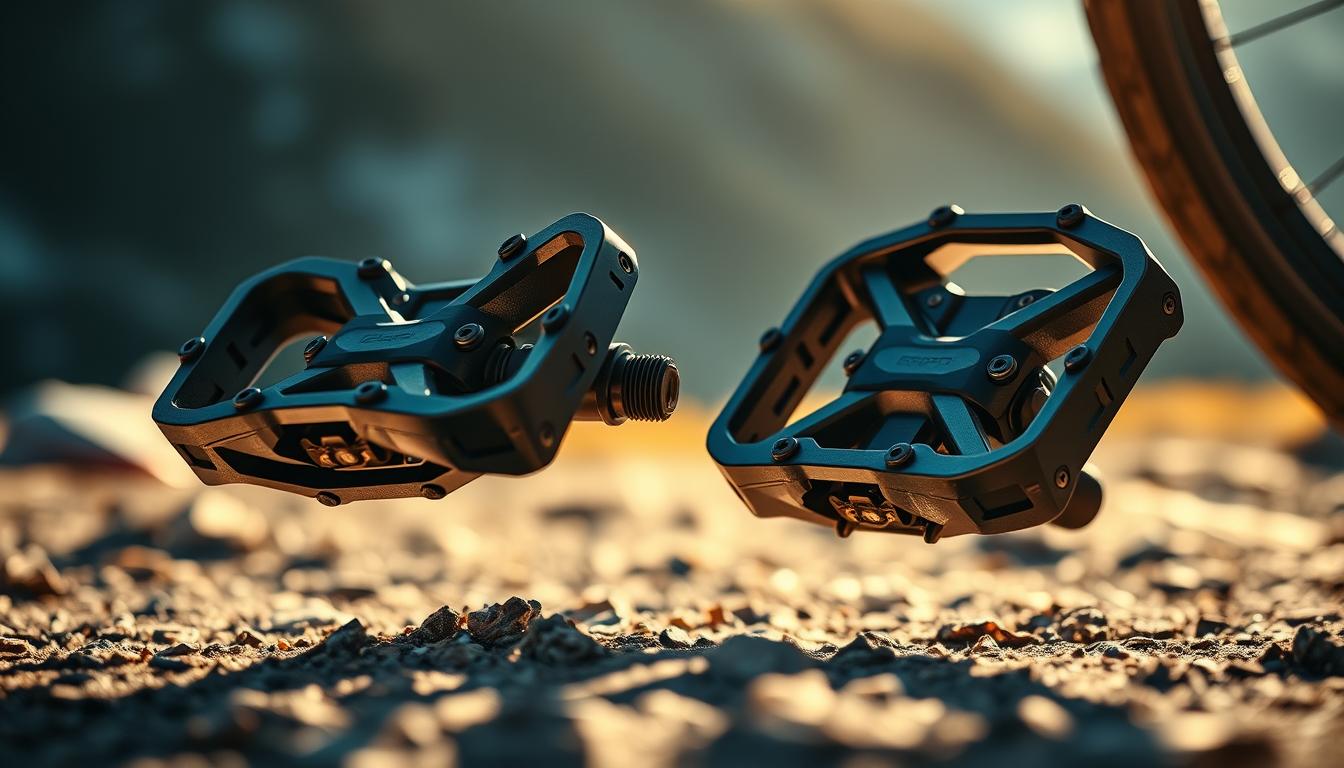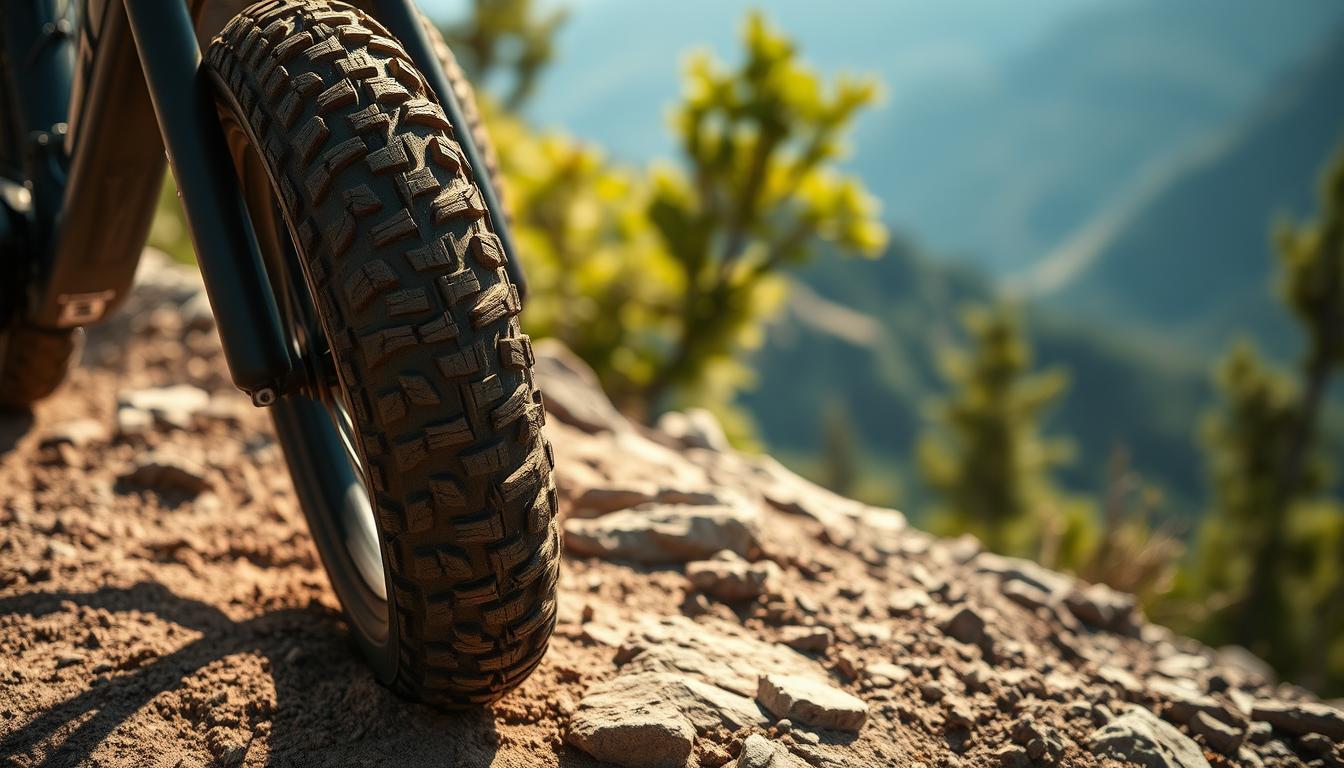When it comes to e-mountain biking, having the right protective gear is crucial to ensure a safe and enjoyable ride. While a helmet is the most obvious piece of safety equipment, it’s just the beginning. Riders should also consider knee pads, elbow pads, and body armour to protect against injuries from falls and impacts on rugged terrain.
According to1, e-bikes in the UK are classified into three categories based on functionality, with specific legal requirements. For instance, an e-bike must meet Electrically Assisted Pedal Cycle (EAPC) standards to be used on public roads, and riders must be over 14 years old. While helmets are not legally required, the Highway Code strongly recommends wearing one, and for good reason – falling without a helmet can be fatal2.
The range of protective gear available includes everything from lightweight helmets like the Bell Sixer MIPS to durable knee pads and elbow pads. These items not only provide protection but also give riders the confidence to tackle more challenging trails. For those interested in learning more about the best protective gear for their e-mountain biking adventures, check out our comprehensive guide here: Essential Protective Gear for E-Mountain Biking.
Additionally, proper care of your e-bike’s battery is essential for longevity. Factors such as heavy-load use and prolonged storage in extreme temperatures can shorten the battery’s service life1. By following simple maintenance tips, riders can extend the life of their e-bike’s battery and ensure optimal performance on the trails.
Why Protective Gear is Crucial for E-MTB Adventures
Mountain biking, especially on electric bikes, offers thrilling adventures but also comes with inherent risks. The combination of high speeds and challenging terrain demands that riders take safety seriously. Protective gear is not just an accessory; it’s a lifeline that can significantly reduce the impact of accidents.
Understanding the Increased Risks on Rough Terrain
Rugged trails and technical routes present unique hazards. Riders on electric mountain bikes often encounter obstacles like steep descents, uneven surfaces, and unexpected bumps. These factors increase the likelihood of falls, where even a minor crash can lead to serious injuries. According to studies, knee injuries are among the most common, making durable knee pads essential3.
Modern e-MTBs are equipped with powerful motors that allow for higher speeds, adding excitement but also increasing accident risk. At such velocities, the impact from a fall can be severe, making proper protective gear indispensable. Riders should opt for gear that meets high safety standards, such as Level 2 knee pads, which can withstand forces up to 30 kN4.
The Role of Safety in High-Speed Trail Riding
Speed is a double-edged sword in trail riding. While it enhances the thrill, it also elevates the risk of severe injuries. Full-face helmets, which pass the ASTM F1952-15 certification, offer the best protection for high-speed impacts4. They cover more of the head and face, reducing the chance of fatal injuries.
Properly fitted gear is just as important as the gear itself. Ill-fitting helmets or pads can compromise protection, so riders should ensure their gear is both comfortable and secure. This attention to detail can be the difference between a minor scrape and a serious injury.
| Protective Gear | Purpose | Importance |
|---|---|---|
| Full-Face Helmet | Protects head and face during high-speed impacts | Essential for downhill and technical riding |
| Knee Pads (Level 2) | Absorbs impact and prevents knee injuries | Crucial for rugged and technical terrains |
| Elbow Pads | Protects elbows from abrasions and fractures | Recommended for all mountain biking adventures |
Investing in quality protective gear is an investment in safety and confidence. By understanding the risks and choosing the right equipment, riders can enjoy their e-MTB adventures with peace of mind.
Choosing the Right Helmet for Your E-MTB Journey
Selecting the perfect helmet for your electric mountain bike adventures is a decision that should not be taken lightly. With so many options available, it’s important to focus on key features that ensure safety, comfort, and durability.
Open-Face Versus Full-Face Designs
Open-face helmets offer excellent ventilation and a lighter weight, making them ideal for casual trails and climbing. However, they provide less coverage, especially around the face. Full-face helmets, on the other hand, offer maximum protection, particularly for high-speed descents and technical terrain. According to4, full-face helmets must meet the ASTM F1952-15 certification criteria for maximum protection.
Key Features: MIPS, Ventilation, and Fit
MIPS technology is a game-changer, reducing rotational impact during crashes. Proper ventilation is essential to keep you cool and prevent sweat from dripping into your eyes. A secure, comfortable fit is non-negotiable—loose straps can compromise protection. According to5, nearly all adult helmets sold in the UK adhere to the EN 1078 safety standard.
| Helmets | Open-Face | Full-Face |
|---|---|---|
| Weight | Lighter | Heavier |
| Ventilation | Excellent | Less |
| Protection | Basic | Maximum |
In conclusion, choosing the right helmet involves balancing protection, comfort, and ventilation based on your riding style and terrain. Always ensure your helmet meets safety standards and fits comfortably.
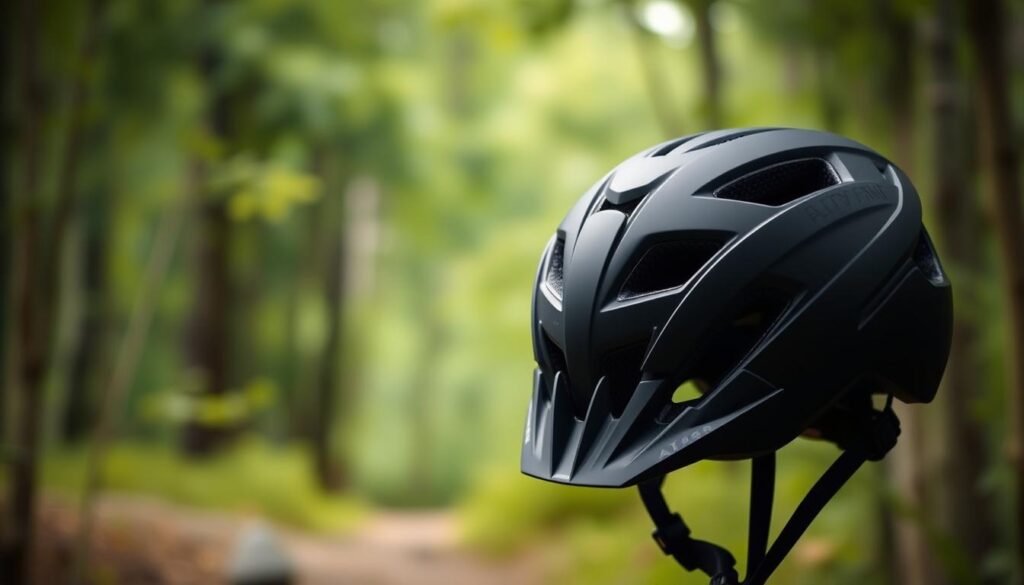
E-MTB protective gear for electric bikes
While a helmet is the cornerstone of safety, protective gear extends far beyond head protection. Ensuring the rest of your body is well-guarded is equally vital for a safe and enjoyable e-mountain biking experience.
Essential Items Beyond the Helmet
Beyond the helmet, essential protective items include body armour, gloves, and pads. Each plays a crucial role in safeguarding different parts of the body from potential injuries.
Body armour offers comprehensive protection, especially for the chest and back, while knee and elbow pads are indispensable for shielding joints from impact. Gloves not only protect hands but also improve grip and control on the handlebars6.
Expert recommendations highlight the importance of combining these items for enhanced protection. According to7, wearing gloves can prevent hand injuries, as the first instinct during a fall is to extend the hands. Additionally, studies show that knee injuries are common, making durable knee pads essential7.
When selecting gear, opt for products vetted for both durability and effectiveness across various terrains. For instance, body armour suits with CE-rated padding and moisture-wicking properties provide high protection6. Similarly, gloves with wrist guards prevent hyperextension while maintaining flexibility6.
| Protective Gear | Purpose | Importance |
|---|---|---|
| Body Armour | Protects chest and back | Essential for high-impact crashes |
| Knee Pads | Absorbs impact, prevents knee injuries | Crucial for rugged terrains |
| Gloves | Protects hands, improves grip | Prevents hand injuries and enhances control |
Exploring the extensive range of e-MTB gear available can help riders find the perfect combination for their riding style. Combining multiple protective items creates a comprehensive safety net, ensuring all vulnerable areas are covered.
For more insights on selecting the right protective gear, visit our protection guide or learn more about e-MTB safety.
Critical Body Armour and Protective Pads
Body armour and protective pads are vital components of any mountain biker’s safety kit, offering essential protection against impacts and abrasions. Whether you’re tackling technical descents or cruising on smoother trails, the right armour can make all the difference.
Knee and Elbow Pad Options for Different Riding Levels
Knee and elbow pads are available in various styles to suit different riding levels and preferences. For casual riders, lightweight pads with level 1 protection are ideal, offering flexibility and basic impact absorption. However, for those tackling challenging terrain, level 2 pads are recommended, as they provide superior protection against heavy impacts8.
When choosing pads, consider the type of riding you’ll be doing most often. Downhill enthusiasts may prefer robust, heavy-duty pads like the Fox Enduro D30, which offers excellent impact absorption for high-speed descents. For cross-country riders, lighter options with breathable materials are more suitable, ensuring comfort without compromising protection.
Selecting Body Armour for Enhanced Impact Absorption
Body armour is designed to protect your torso, offering varying levels of coverage and support. Look for armour with integrated padding and a secure fit to ensure maximum protection during falls. Some models feature additional padding for the chest and back, which can be especially beneficial for downhill riding8.
A study by the International Journal of Injury Control and Safety Promotion highlighted that wearing body armour can reduce the risk of torso injuries by up to 40% in mountain biking accidents9. This makes it a crucial addition to any serious rider’s protective gear.
When selecting body armour, consider the level of support and coverage it provides. For aggressive riders, armour with higher impact ratings and additional padding is recommended. Always check for certifications that meet safety standards to ensure reliability.
Remember, the right combination of pads and armour not only enhances safety but also boosts confidence, allowing you to push your limits on the trails.
Essential Gloves and Footwear for Mountain Biking
Gloves and footwear are often overlooked but are crucial for a safe and enjoyable mountain biking experience. They provide grip, comfort, and protection, making them essential for tackling various terrains.
Glove Designs for Improved Grip and Comfort
Modern gloves are designed to enhance grip and comfort. Full-finger designs offer better protection on technical terrain, while summer gloves provide ventilation for warmer rides. Look for gloves with touchscreens for convenience without compromising grip10.
Footwear That Offers Stability and Protection
Sturdy footwear with rigid soles and cleat compatibility improves pedaling efficiency by up to 30%11. Waterproof shoes are ideal for wet conditions, maintaining warmth and protection. Brands like Five Ten and Specialized offer reliable options for downhill stability.
Balancing light weight and robust construction ensures comfort during long rides. Proper footwear and gloves together create a complete safety approach, essential for every mountain biking adventure10.
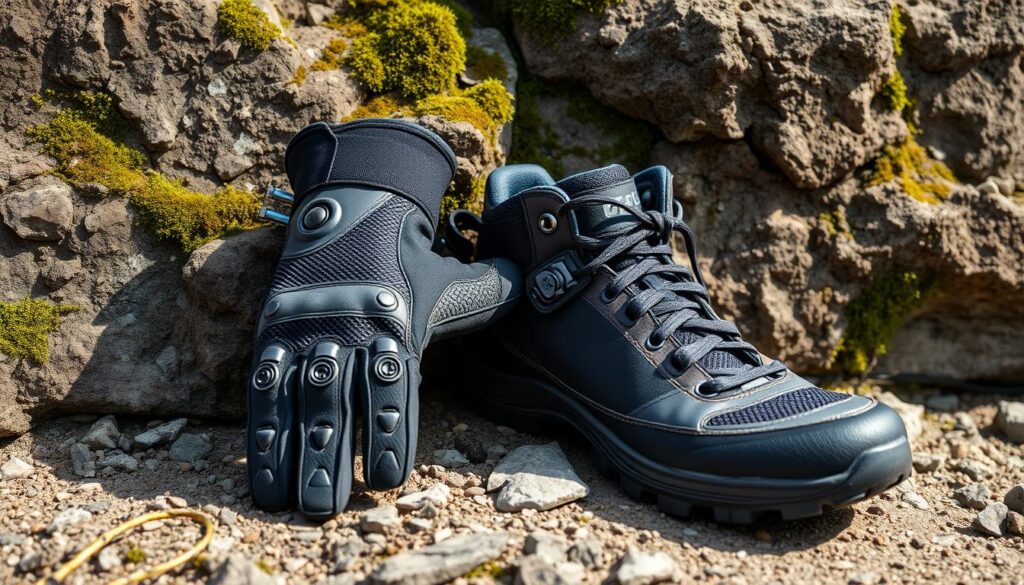
Additional Accessories to Enhance Your Ride
While protective gear is essential, there are several additional accessories that can elevate your mountain biking experience. These items not only enhance safety but also improve performance and convenience on the trails.
Bike Locks and Security Measures
Securing your bike is just as important as protecting yourself. High-security locks like the Kryptonite Evolution Mini 7, which boasts an 18mm hardened steel shackle and ‘Police Preferred Specification’ status, offer robust protection against theft12. Similarly, the Hiplock Folding Lock with a Sold Secure rating ensures your bike remains safe when unattended.
Navigation Tools and Protective Eyewear
Navigating unfamiliar trails is made easier with advanced GPS tools like the Garmin Edge Explore, which helps monitor routes in real-time. Additionally, protective eyewear with interchangeable lenses and anti-fog features provides all-day comfort, adapting to varying light conditions. This gear is indispensable for riders tackling diverse terrains.
Reflective details and quality design enhance safety during low-light rides, making you more visible to others. These accessories not only improve safety but also boost overall ride performance, creating a comprehensive enhancement strategy for your adventures.
Key Accessories for Enhanced Safety and Performance
| Accessory | Features | Benefits |
|---|---|---|
| Bike Locks (e.g., Kryptonite Evolution Mini 7) | High-security steel shackles, Sold Secure ratings | Deters theft, ensures bike safety |
| GPS Navigation Tools (e.g., Garmin Edge Explore) | Real-time route tracking, customizable routes | Enhances navigation, reduces getting lost |
| Protective Eyewear | Interchangeable lenses, anti-fog coating | Protects eyes, improves visibility in all conditions |
Investing in these accessories ensures a safer, more enjoyable, and performance-enhanced riding experience. They complement your core protective gear, making every ride more confident and rewarding.
Maintaining Your E-MTB and Its Protective Gear
Regular maintenance is essential to ensure your e-MTB and its protective gear remain in top condition. A well-maintained bike not only performs better but also enhances safety and riding enjoyment. In this section, we’ll explore the importance of routine safety checks, cleanliness, and professional servicing.
Routine Safety Checks and Cleanliness
Before every ride, conduct a quick safety check. This includes inspecting the brakes, tyres, and chain for wear. Cleanliness is crucial—use a cleaner designed for e-MTBs to prevent corrosion and maintain your bike’s condition13. Regular cleaning of your protective gear, such as knee pads and gloves, ensures hygiene and longevity.
Professional Servicing and Battery Management
Professional servicing is recommended at least once a year. Experts can inspect electrical components and ensure everything functions correctly14. For battery care, store it in a cool, dry place with a charge level between 30-60%. Avoid letting the battery drop below 30% to preserve its capacity14.
| Maintenance Task | Frequency | Importance |
|---|---|---|
| Tyre Pressure Check | Daily | Ensures optimal grip and efficiency |
| Chain Lubrication | Weekly | Prevents wear and corrosion |
| Battery Charge Check | Before Storage | Maintains battery health |
By following these maintenance tips, you can extend the life of your e-MTB and its protective gear, ensuring safe and enjoyable rides.
Conclusion
As you prepare to hit the trails on your electric mountain bike, remember that safety is the cornerstone of every successful adventure. This guide has covered everything from helmets to maintenance routines, ensuring you have the knowledge to ride with confidence.
A proper helmet can reduce the risk of head injuries by 70%15, while gloves lower hand injuries by 30%16. Comprehensive safety products, from helmets to body armour, ensure a worry-free ride, no matter the terrain.
Investing in high-quality equipment is crucial. Take the time to choose and maintain your gear, as it can dramatically reduce the risk of impact injuries. Consider this guide your trusted reference for making informed safety decisions.
We encourage you to share your experiences and recommendations to help build a safer riding community. Remember, safety is a shared responsibility that starts with each rider.
So, gear up with confidence and enjoy your electric mountain bike adventures with the peace of mind that comes from being well-prepared. Ride safely and responsibly!
FAQ
Why is protective gear essential for mountain biking?
Protective gear is crucial for mountain biking as it helps prevent injuries from falls or collisions. A helmet, gloves, and pads protect vital areas, ensuring safety on various terrains.
What is the difference between an electric mountain bike and a regular mountain bike?
Electric mountain bikes, or e-bikes, have a motor and battery, offering pedal assistance. This makes climbing easier and allows longer rides, while regular bikes rely solely on pedal power.
How do I choose the right helmet for mountain biking?
Select a helmet with a snug fit, MIPS technology for impact protection, and good ventilation. Full-face helmets offer more protection for downhill riding, while open-face helmets are lighter for trail use.
What protective gear should I wear besides a helmet?
Essential gear includes knee pads, elbow pads, gloves, and sturdy footwear. Consider body armour for high-speed or technical terrains to enhance safety.
How often should I maintain my e-mountain bike?
Regular maintenance is key. Check tyre pressure, brakes, and battery charge before each ride. Professional servicing is recommended every 6 months to ensure optimal performance.
Can I ride an e-mountain bike in the rain?
Yes, but with caution. Ensure your bike is waterproof, reduce speed, and use appropriate tyres for better grip on wet surfaces to maintain control and safety.
What are the best gloves for mountain biking?
Look for gloves with a secure fit, grip on the palms, and padding. Consider waterproof options for wet conditions to maintain control and comfort during your ride.
How do I secure my e-mountain bike from theft?
Use a high-quality U-lock or chain lock. Park in well-lit, busy areas and consider a GPS tracker for added security, ensuring your bike remains safe.
Source Links
- E-Bike Safety & Legal Regulations – Leisure Lakes Bikes Blog
- What e-MTB Protective Gear to Wear in 2023 – E Mountain Bikes
- What e-MTB Protective Gear to Wear in 2023 – E Mountain Bikes
- The eMTB protection guide – How much protection should I wear whilst riding my eMTB?
- Cycling Helmets Buyer’s Guide: which is best? Tips & Advice
- The Protective Gear Guide for Electric Scooters, Electric Unicycles, e-Boards and e-Bikes | Personal Electric Transport Bog
- Electric Mountain Bike Accessories: The Ultimate Sustainable Must-Haves Guide — Ecowiser
- Top 15 Mountain E-Bike Accessories for Your Next Adventure
- Body armour, so much choice
- Best mountain bike gloves reviewed and rated by experts – MBR
- Essential MTB Clothing: What to Wear on the Trail
- Best Electric Bikes Accessories Guide – Leisure Lakes Bikes Blog
- Top 10 Tips For Looking After Your Electric Mountain Bike (EMTB) This Winter
- How to maintain your electric bike, from servicing to washing electrical parts
- Essential Safety Gear for E-Bike Riders: Protecting Yourself on the Road
- Steer Clear of E-Bike Accidents: A Listicle Guide! | Himiway
